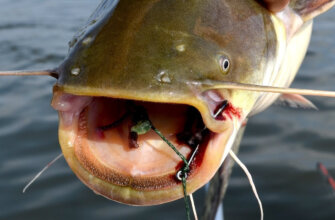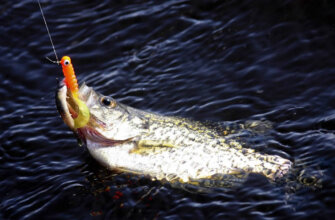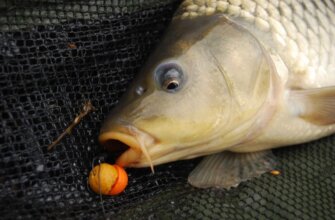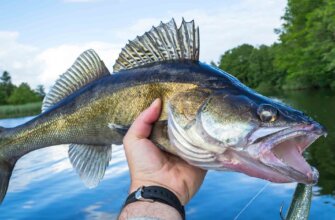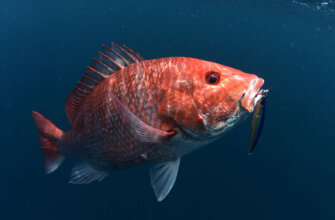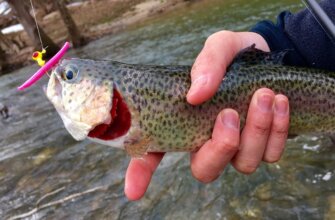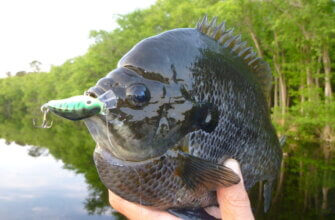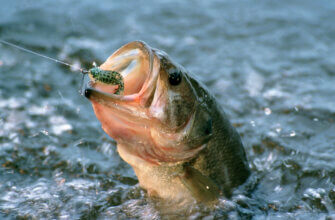Bream fishing is a popular recreational activity that involves catching bream, which are a type of freshwater or saltwater fish belonging to the family Sparidae. Bream are known for their tasty flesh and can be found in various bodies of water around the world.
10 Best bait for bream
When it comes to bait for bream fishing, there are several effective options you can try. Bream are known to be opportunistic feeders and can be caught using a variety of baits.
Here are ten effective bait options for targeting bream:
- Worms. Garden worms, nightcrawlers, or red worms are classic and reliable baits for bream. They are readily available, affordable, and appeal to bream’s natural feeding instincts.
- Maggots. White or red maggots are another excellent bait for bream. They are particularly effective during colder months when bream’s feeding preferences shift towards smaller, more easily digestible prey.
- Crickets. Live crickets make great bait for bream, especially during the summer months when they are abundant. Bream find the movement and sound of live crickets irresistible.
- Mealworms. Mealworms are the larvae of darkling beetles and are widely available in bait shops. They are small, easily digestible, and very attractive to bream.
- Corn. Sweetcorn kernels, either fresh or canned, are a popular bait for bream. They are brightly colored, easy to use, and can be presented on a hook alone or combined with other baits.
- Bread. Small pieces of bread can be a surprisingly effective bait for bream. It can be molded onto a hook or used in combination with a feeder or bread paste.
- Berkley Gulp! Alive Minnow. These artificial baits mimic the appearance and scent of real minnows. They are particularly effective when bream are more finicky and reluctant to bite on traditional baits.
- Small Minnows. Live or dead minnows can be effective bait for larger bream. Hook them through the lips or behind the dorsal fin to imitate a wounded or dying fish.
- Insects. Bream will readily take various insects, such as grasshoppers, beetles, or caterpillars. Keep an eye on the local insect population and use what is available in your fishing area.
- Artificial Grubs and Soft Plastic. Small plastic grubs or soft plastics in natural colors can be productive baits for bream. Rig them on a jig head or Texas rig and fish them near the bottom or suspended in the water column.
Worms
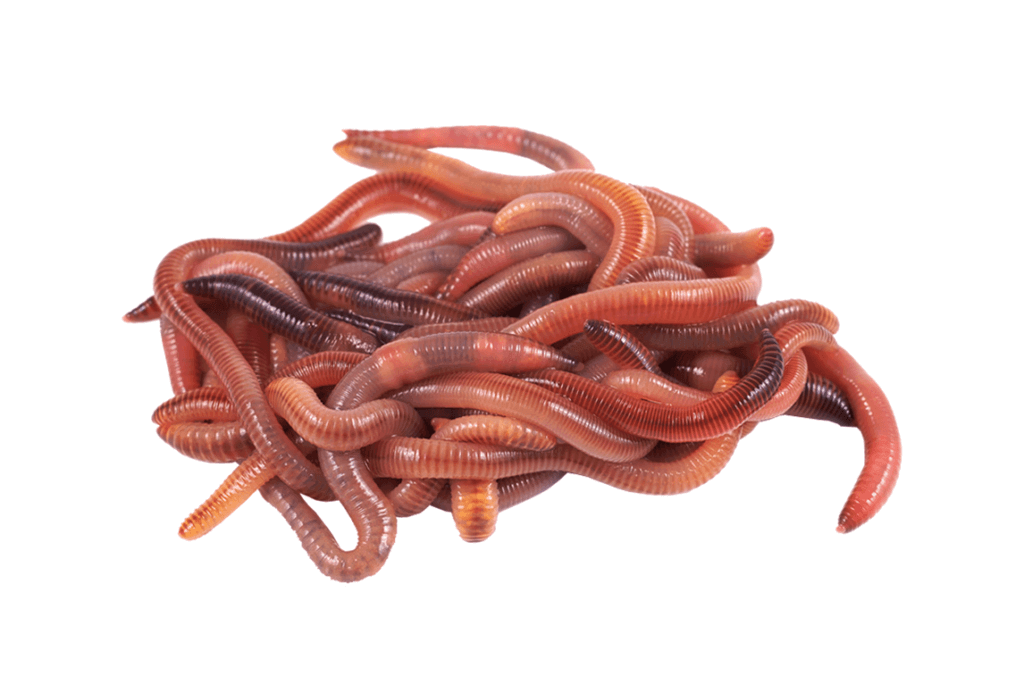
Worms are a popular and effective bait for bream fishing. Bream are opportunistic feeders and often feed on small invertebrates like worms, insects, and crustaceans. Using worms as bait can help attract bream and increase your chances of catching them.
Here are a few tips for using worms for bream fishing:
- Select the right worms: Use live worms such as nightcrawlers, redworms, or garden worms. These worms are readily available at bait shops or can be collected from your own garden. Bream have a relatively small mouth, so use smaller-sized worms rather than large ones.
- Rigging: There are different ways to rig a worm for bream fishing. One popular method is to use a small hook (size 8 to 12) and thread the worm onto it, leaving a small portion of the worm dangling. This setup allows the worm to move naturally in the water, attracting the attention of bream.
- Technique: Bream often feed close to the bottom, so it’s best to fish with your worm bait near the bottom of the water column. Cast your line and let it sink, then use a slow and gentle retrieve to mimic the movement of a live worm. You can also try using a bobber or float to suspend the worm just above the bottom, making it more visible to the bream.
- Location: Bream tend to congregate around underwater structures such as rocks, fallen trees, weed beds, or docks. These areas provide cover and attract smaller prey that bream feed on. Look for these types of structures in lakes, rivers, or ponds, and focus your fishing efforts there.
- Time and season: Bream are more active during warmer months, so fishing for them in spring and summer can yield better results. Additionally, bream are often more active during early morning or late afternoon when the water temperature is more favorable.
Maggots
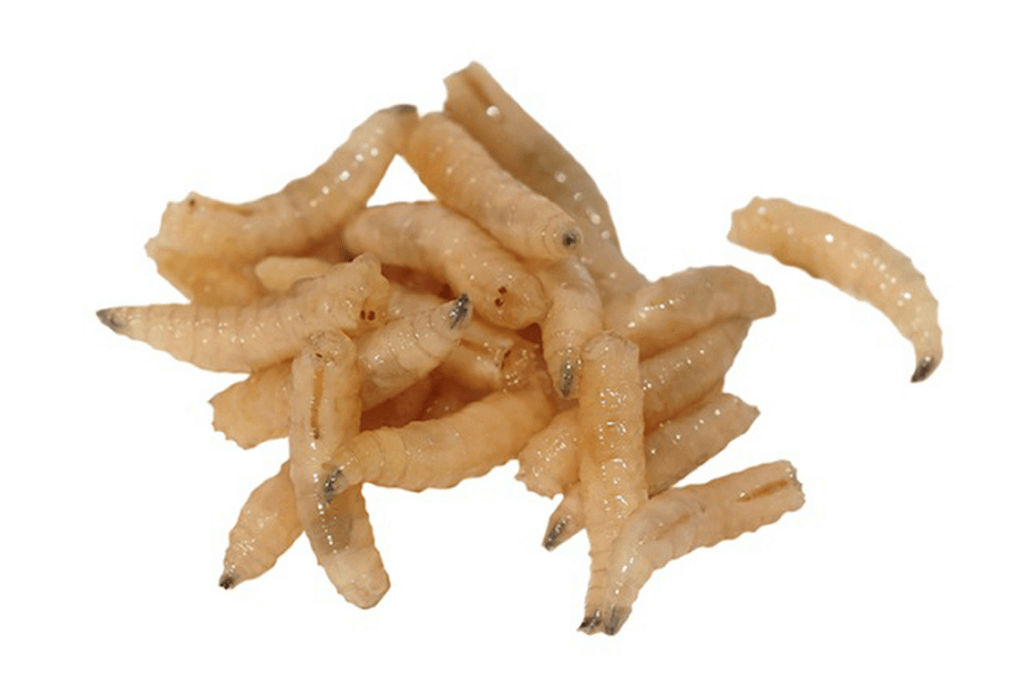
Maggots are a popular bait for bream fishing in many parts of the world. Bream, also known as freshwater or silver bream, are attracted to maggots because they are a natural part of their diet. Using maggots as bait can be an effective way to entice bream to bite.
To use maggots for bream fishing, you’ll need a few basic supplies:
- Maggots: You can purchase maggots from fishing tackle shops or bait suppliers. They are usually sold in small containers or bait tubs.
- Bait box: A bait box or container is used to hold the maggots. It should have small holes or vents to allow airflow and prevent the maggots from escaping.
- Fishing tackle: Depending on your fishing method, you’ll need appropriate tackle such as a fishing rod, reel, line, hooks, and weights.
Once you have your maggots and fishing gear ready, here’s how you can use maggots for bream fishing:
- Hook selection: Use a small, fine wire hook that is suitable for the size of maggots you have. Bream have relatively small mouths, so choose a hook size that matches the bait.
- Hooking the maggots: Take one or two maggots and thread them onto the hook. You can do this by pushing the hook point through the thicker part of the maggot’s body. Make sure the hook is fully concealed within the bait, leaving no exposed metal.
- Bait presentation: Bream often feed on or near the bottom of the water, so adjust your fishing technique accordingly. You can use a float rig, feeder rig, or ledger rig, depending on the fishing conditions and your preference. Cast your baited hook to an area where bream are likely to be present.
- Patience and observation: Bream can be cautious and slow feeders, so it’s important to be patient. Keep an eye on your float or other indicators for any signs of movement or bites. If you don’t get a bite after some time, try adjusting your bait presentation or location.
Crickets
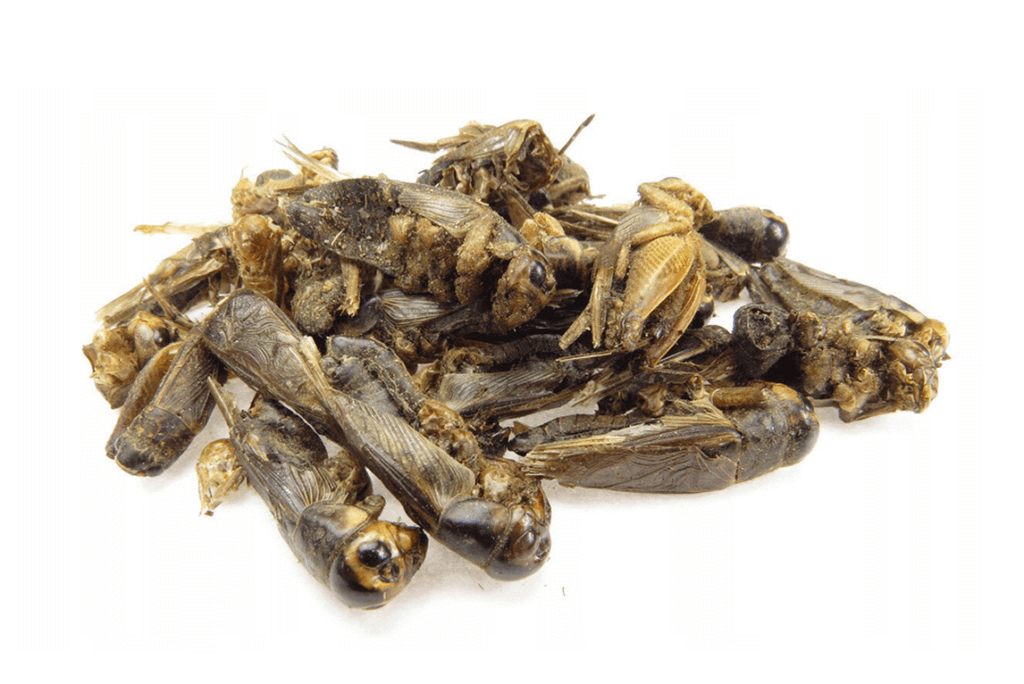
Using crickets as bait for bream fishing can be effective in certain situations. Bream are opportunistic feeders and are known to eat a variety of natural prey items, including insects like crickets.
Here’s a guide on how to use crickets for bream fishing:
- Acquiring crickets: You can find crickets at most pet stores or bait shops. Alternatively, you can catch them yourself using a cricket trap or by hand in grassy areas.
- Hook selection: Use small-sized hooks, typically in the range of size 6 to 12, depending on the size of the crickets and the bream you are targeting. Make sure the hooks are sharp to increase your chances of hooking the fish.
- Rigging the cricket: Thread the hook through the collar area, just behind the cricket’s head. Be gentle to avoid killing or injuring the cricket. You can also remove one of the cricket’s hind legs to make it less mobile, making it easier for bream to catch.
- Bait presentation: Cast your line into areas where bream are likely to be feeding, such as near structures like fallen trees, docks, or vegetation. Allow the cricket to sink naturally and maintain a slight tension on the line to detect any bites.
- Technique: Bream are known to peck at their food, so it’s important to be patient and watch for subtle bites. When you feel a nibble or see the line twitch, gently lift your rod to set the hook.
- Experiment: If using live crickets isn’t producing results, you can try using artificial lures that mimic crickets. Soft plastic baits in cricket or insect patterns can be effective when bream are being finicky.
Mealworms
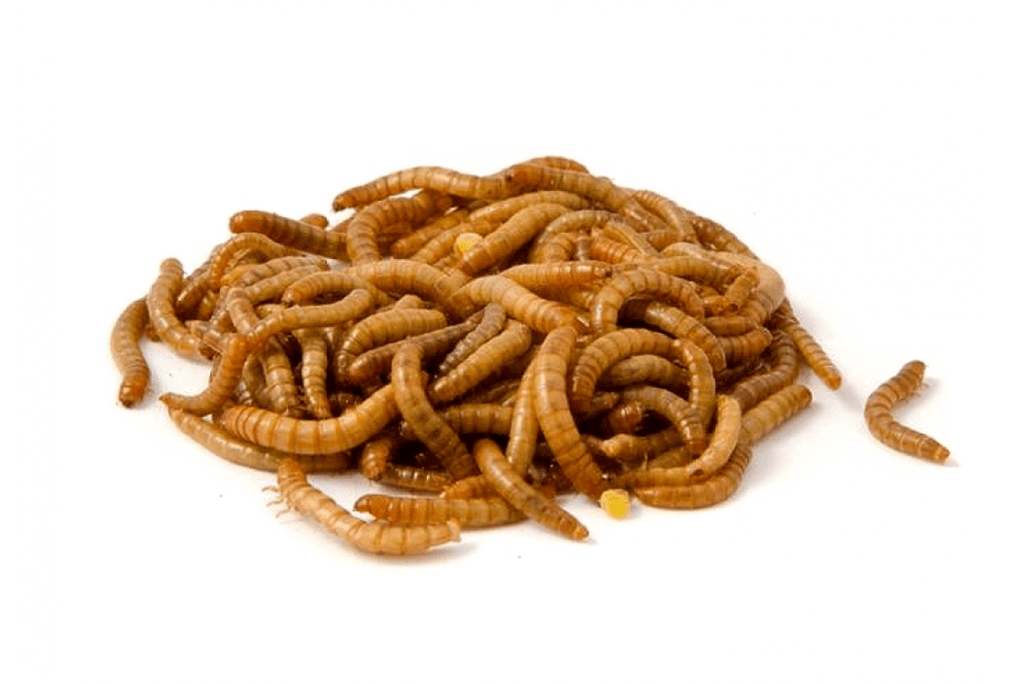
Using mealworms for bream fishing can be an effective strategy. Bream are opportunistic feeders and will readily take a variety of baits, including mealworms. Here are some tips on using mealworms for bream fishing:
- Bait Presentation: Thread a single or multiple mealworms onto a small hook. You can also use a hair rig, which involves threading the mealworm onto a length of fishing line tied to the hook. This allows the mealworm to move more naturally in the water, attracting the attention of bream.
- Rigging: A simple and effective rig for bream fishing is a basic running ledger rig. This consists of a swivel tied to the mainline, a short leader with the hook, and a weight attached to the end to keep the bait in place.
- Location: Bream are commonly found near the bottom in lakes, rivers, and ponds. Look for areas with structure such as submerged rocks, fallen trees, or weed beds where bream like to feed. Cast your baited hook near these areas to increase your chances of catching bream.
- Patience and Stealth: Bream can be easily spooked, so it’s important to be quiet and avoid making unnecessary movements near the fishing spot. Allow the bait to settle in the water and be patient. Bream are known to inspect baits before committing, so give them time to find and take the mealworm.
- Time of Day: Bream are most active during dawn and dusk, so fishing during these periods can yield better results. However, bream can be caught throughout the day, so it’s worth experimenting with different times.
- Additional Baits: While mealworms can be effective, it’s always a good idea to have a variety of baits on hand. Bream also respond well to other natural baits like maggots, worms, corn, and bread.
Corn
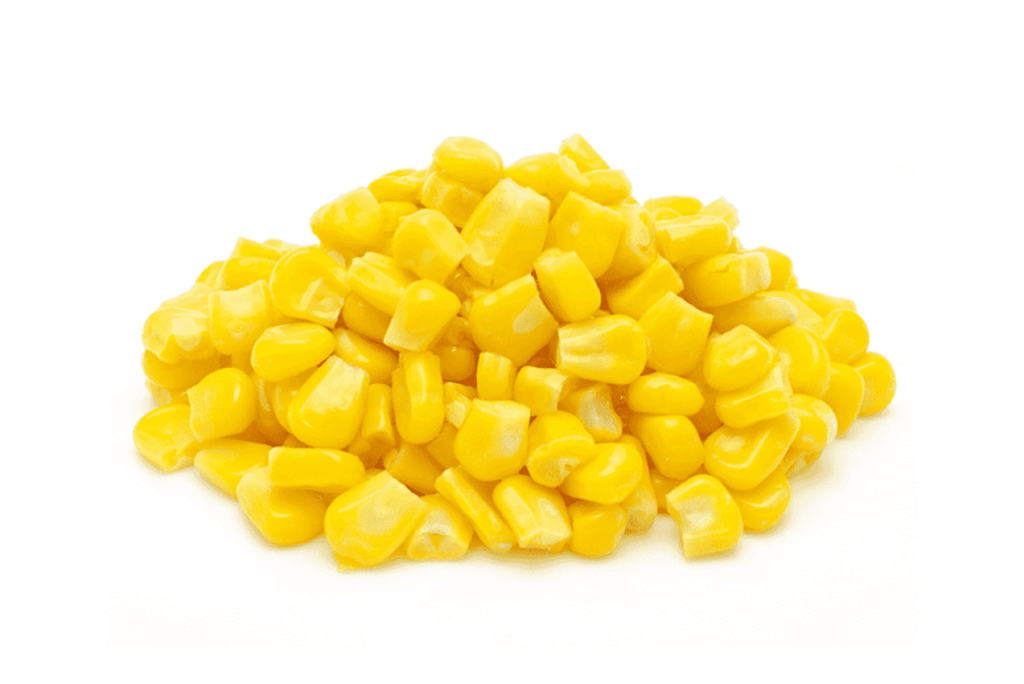
Corn is a highly effective and widely used bait for targeting bream, also known as bluegill or sunfish. Bream are attracted to the scent, color, and taste of corn, considering it as a natural food source.
Here’s some information about using corn for bream fishing:
- Effectiveness: Corn can be an effective bait for catching bream (also known as bluegill or sunfish) due to its appealing color, scent, and taste. Bream are omnivorous and feed on a variety of natural food sources, including insects, small fish, and plant matter. Corn can mimic natural food sources and attract bream to your fishing spot.
- Preparation: When using corn as bait for bream, it’s common to use canned sweet corn kernels. You can drain the liquid from the can and either use the kernels directly or enhance them by adding extra scent or flavor. Some anglers soak the corn in attractant liquids or add flavored extracts to make it more enticing.
- Rigging: There are several ways to rig corn for bream fishing. One popular method is using a small hook, such as a size 8 or 10, with a split shot sinker placed a few inches above the hook. You can thread a few corn kernels onto the hook or use a small piece of corn as bait. Another rigging option is using a small bobber or float to suspend the bait at a desired depth.
- Presentation: Bream tend to feed near the water’s surface, especially during dawn and dusk when they are most active. When fishing with corn, cast your line near the shoreline, fallen trees, or areas with vegetation where bream are likely to be present. Allow the bait to sit or slowly retrieve it to imitate natural movement. Experiment with different techniques to see what works best for the specific bream behavior in your fishing location.
- Additional Tips: It’s important to check and comply with local fishing regulations regarding bait usage. Also, consider using light tackle when targeting bream to enhance the sensitivity and fun of the fishing experience. Bream can be found in various freshwater bodies such as lakes, ponds, rivers, and streams, so research your fishing location to better understand the specific habits and preferences of bream in that area.
Bread
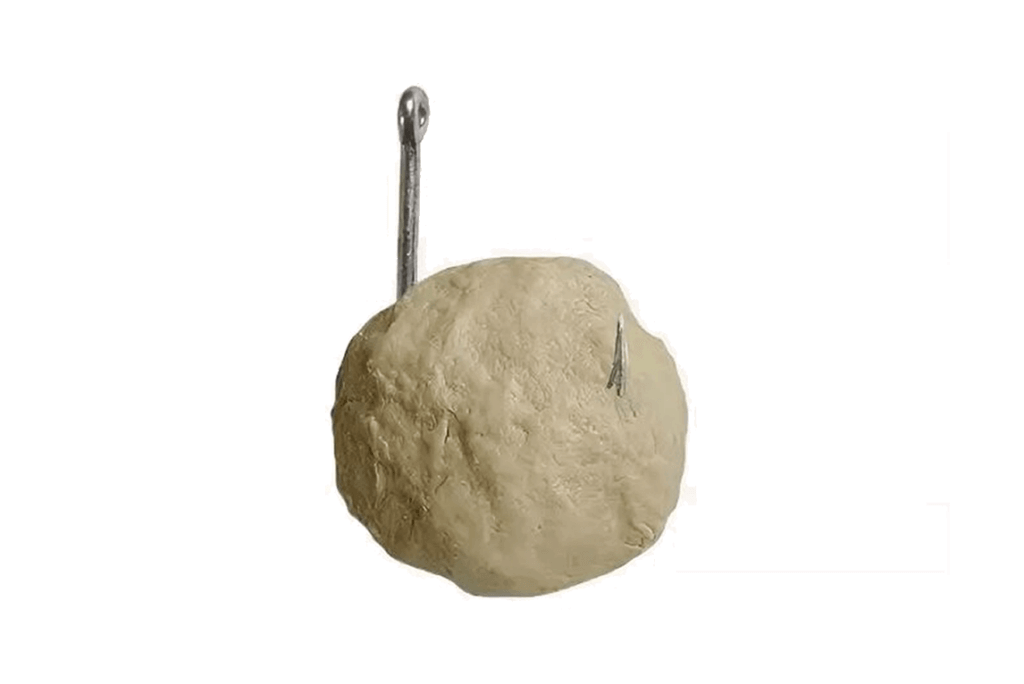
Bread is a simple yet effective bait for targeting bream, also known as bluegill or sunfish. Bream are attracted to the scent and visual appeal of bread, considering it as a readily available food source.
Here’s how you can use bread for bream fishing:
- Bread Flakes: One popular method is to use bread flakes as bait. Take a slice of bread and remove the crust. Tear the remaining bread into small pieces or flakes. You can make them various sizes to see what works best. These bread flakes can be used on a hook directly or molded around the hook.
- Bread Paste: Another option is to create a bread paste or dough. This involves moistening bread slices with water or mixing them with other ingredients like cornmeal, oatmeal, or ground-up pellets to form a sticky dough. Mold the dough onto your hook or make small dough balls to use as bait.
- Ground Bread Groundbait: You can also make a groundbait using bread. Simply blend or grind the bread into a fine powder or crumb consistency. Add water, and you can mix in additional ingredients like ground pellets, fishmeal, or flavorings to enhance its attractiveness. Sprinkle the groundbait into the water to attract bream and hold their attention in your fishing area.
- Feeding Strategy: In addition to using bread as bait, consider using it as a feeding strategy. Start by throwing small pieces of bread into the water to create a feeding area. This will attract bream to your fishing spot. Once they are actively feeding, present your bread baited hook among the loose feed to entice them to bite.
Berkley Gulp! Alive Minnow
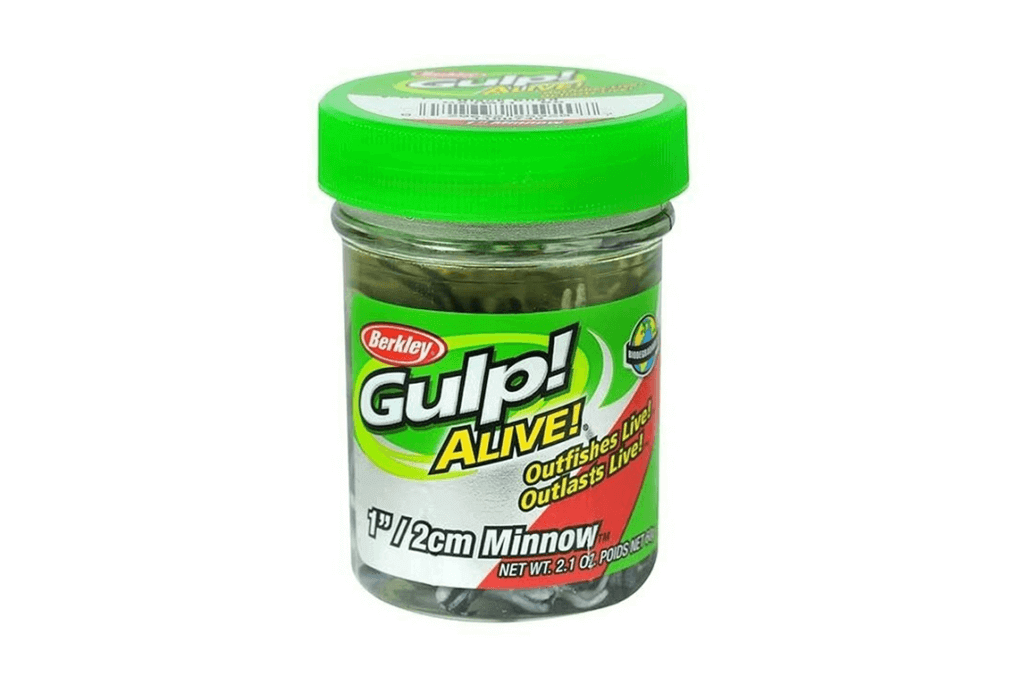
The Berkley Gulp! Alive Minnow is a highly effective artificial bait for targeting bream, also known as bluegill or sunfish. The Gulp! Alive Minnow is designed to mimic the appearance and movement of a real minnow, which is a favorite prey of bream. The bait is made of a soft and lifelike material that releases a potent scent and flavor, attracting bream from a distance. The Gulp! Alive Minnow comes in various sizes and colors, allowing you to match the prevailing conditions and the bream’s preferences. Rig the Gulp!
Here are a few tips for using the Berkley Gulp! Alive Minnow for bream fishing:
- Rigging: You can rig the Gulp! Alive Minnow on a jighead, drop shot rig, or a small hook with a split shot. The specific rigging method may depend on your fishing conditions and personal preference. Experiment with different setups to see what works best for you.
- Presentation: When targeting bream, it’s important to present the bait in a natural manner. Cast your bait near structures such as submerged logs, rocks, or weed beds where bream are likely to congregate. Retrieve the bait with a slow and steady motion, imitating the movement of a wounded or injured baitfish.
- Scent: One of the key features of the Gulp! Alive Minnow is its scent. The bait is infused with a powerful attractant that releases scent in the water, which can help entice bream to strike. The scent dispersal can attract bream from a distance, increasing your chances of a bite.
- Storage: The Gulp! Alive Minnow comes in a resealable jar filled with Gulp! Alive solution. After each fishing trip, ensure that you store the bait properly to maintain its effectiveness. Keep the bait in the solution to preserve its scent and lifelike texture.
Small Minnows
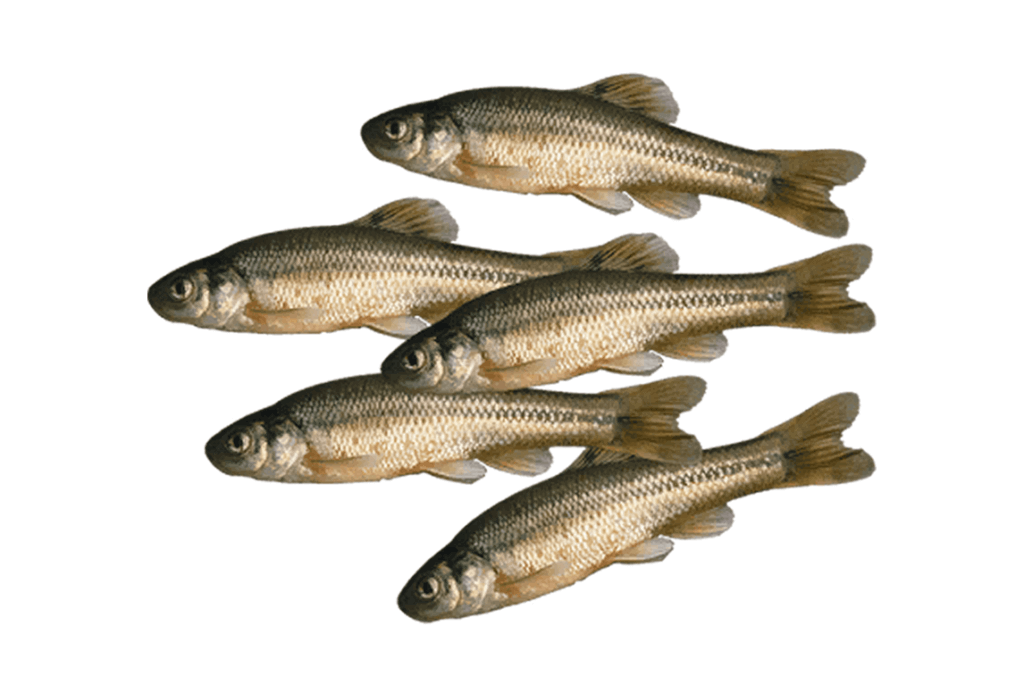
Small live minnows are an excellent bait choice when targeting bream, also known as bluegill or sunfish. Bream are natural predators and often feed on small minnows, making them a highly enticing bait option.
When using small minnows for bream, it’s important to choose healthy and lively specimens. Hook the minnow through the lips or just behind the dorsal fin using a small hook, such as a size 10 or 12, ensuring the hook is securely embedded without hindering the minnow’s movement. Cast the bait near areas where bream are likely to be feeding, such as around submerged structures, weed beds, or along the edges of shorelines. Allow the minnow to swim naturally or retrieve it with slow, subtle movements to imitate injured prey. Bream tend to feed at various depths, so adjusting the depth of the bait can be crucial. Pay attention to any signs of bites or strikes, as bream can be quick to take the minnow. Using a light or ultralight fishing setup is ideal for bream fishing, as they are small fish and offer a fun fight on lighter tackle. Small minnows can be used with various techniques, such as float fishing or bottom fishing with a small weight.
Experiment with different presentations and depths to find the most successful approach for attracting bream. Remember to handle the minnows with care and keep them in a cool and aerated container to maintain their liveliness and attractiveness to bream.
Insects
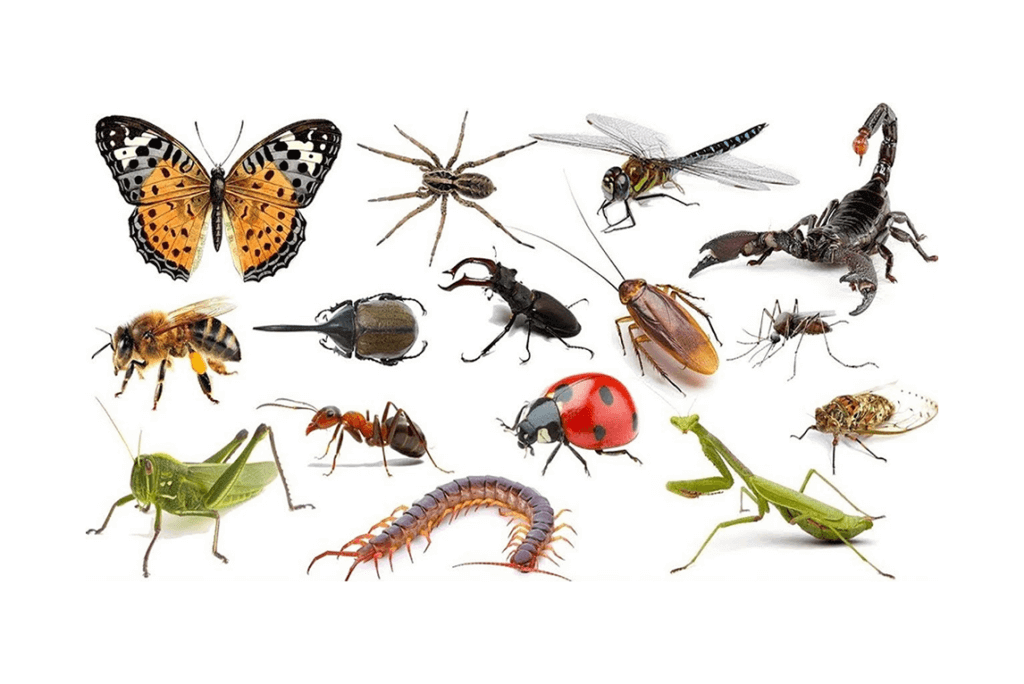
Insects are a natural and highly effective bait for targeting bream, also known as bluegill or sunfish. Bream are opportunistic feeders and readily strike at a variety of insects, considering them as a primary food source.
When using insects for bream, it’s important to choose insects that are commonly found in the bream’s habitat and are appealing to them. Some popular insect baits for bream include crickets, grasshoppers, mayflies, and beetles. Rig the insect bait onto a small hook, such as a size 10 or 12, ensuring that the hook is securely embedded without hindering the insect’s movement. Cast the bait near areas where bream are likely to be feeding, such as around submerged structures, weed beds, or along the edges of shorelines. Allow the insect to float naturally on the surface or retrieve it slowly, imitating the movement of a struggling insect. Bream tend to feed close to the surface or near the bottom, so adjusting the depth of the bait can be important. Pay attention to any signs of bites or nibbles, as bream can be delicate feeders. Using a light or ultralight fishing setup is ideal for bream fishing, as they are small fish and provide a fun fight on lighter tackle. Insects can be used with various fishing techniques, including float fishing or fishing with a small bobber.
Experiment with different insect baits and presentations to find the most successful approach for attracting bream. Remember to handle the insects gently and keep them in a suitable container to maintain their liveliness and attractiveness to bream.
Artificial Grubs and Soft Plastics

Artificial grubs and soft plastics are versatile and effective bait options when targeting bream, also known as bluegill or sunfish. These baits are designed to mimic the appearance and movement of natural prey, such as worms, insects, or small baitfish.
When using artificial grubs and soft plastics for bream, it’s important to choose baits in appropriate sizes and colors that match the prevailing conditions and the bream’s preferences. Rig the grub or soft plastic onto a small hook, such as a size 10 or 12, ensuring that the hook is securely embedded in the bait. Cast the bait near areas where bream are likely to be feeding, such as around submerged structures, weed beds, or along the edges of shorelines. Retrieve the bait with a slow and steady retrieve, imparting subtle twitches or pauses to mimic the movement of natural prey. Bream are often found near the surface or in mid-water, so adjusting the depth of the bait can be important. Pay attention to any strikes or bites, as bream can be quick to react to artificial grubs and soft plastics. Using a light or ultralight fishing setup is ideal for bream fishing, as they are small fish and offer a fun fight on lighter tackle. Artificial grubs and soft plastics can be used with various techniques, such as casting, jigging, or even under a float.
Experiment with different presentations, colors, and sizes to find the most successful approach for attracting bream. Remember to handle the baits carefully and keep them properly stored to maintain their shape and effectiveness.

